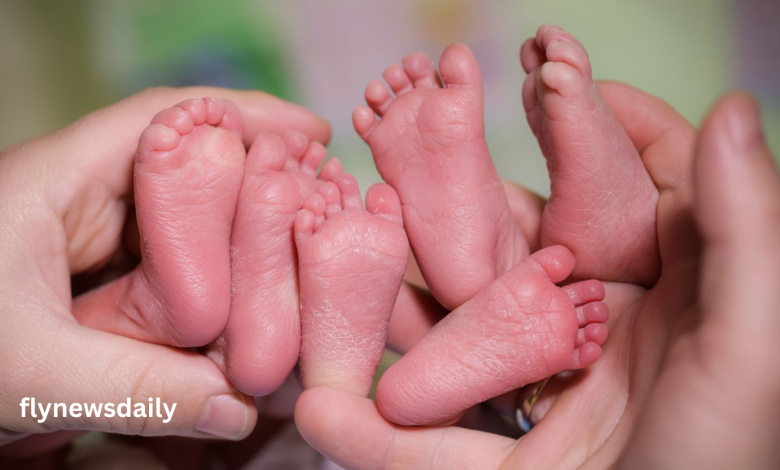
Introduction
In recent years, the trend of triplet births declining in the US has sparked numerous discussions among healthcare professionals, families, and sociologists. Once a rare but celebrated aspect of family life, triplet births are witnessing a downturn, raising questions about what this means for American society. It is essential to explore the dynamics of this decline and the potential implications for families and communities across the nation.
The Rise in Multiple Births
Historically, the rate of multiple births in the United States has fluctuated, with various factors contributing to these trends. In the late 20th century, advancements in fertility treatments played a significant role in increasing instances of twins, triplets, and higher-order multiples. According to the Centers for Disease Control and Prevention (CDC), the birth rate for triplets rose sharply during the 1990s and early 2000s.
Key Statistics:
- In 1990, the triplet birth rate was approximately 80 per 100,000 births.
- By 2007, this rate had climbed to about 160 per 100,000 births.
- Recent data indicates that this number has been steadily declining.
These statistics not only highlight the previous popularity of triplet births but also underscore the need to understand the shifting landscape of family structures in the present day.
Current Trends: Triplet Births Declining in the US
As of 2023, reports indicate a noticeable decline in the number of triplet births in the United States. The most recent figures suggest that the rate is close to the lower numbers recorded in the late 1980s. This decline can be attributed to various changes in health, social behaviors, and advancements in medical technology.
Reasons Behind Declining Triplet Births
Identifying the reasons behind the decline in triplet births involves a mix of medical, societal, and economic factors.
1. Advancements in Fertility Treatments
- Modern fertility treatments are now more refined, allowing doctors to better manage the number of embryos implanted during in vitro fertilization (IVF). With an increasing emphasis on healthier pregnancies, many couples opt for fewer embryos to reduce the risk of complications associated with high-order multiples.
2. Changes in Family Planning
- Couples today tend to wait longer to have children, and many are prioritizing their careers or personal goals. This shift often leads to considerations about family size, with a preference for smaller families including singletons or twins instead of triplets.
3. Increased Awareness of Health Risks
- Higher-order multiple pregnancies are associated with increased health risks for both the mother and infants, such as premature births and developmental issues. As more information becomes available, couples may opt for alternative family planning methods to mitigate such risks.
4. Economic Factors
- The costs associated with raising multiple children simultaneously can be daunting. Economic uncertainty often prompts families to choose smaller family sizes, particularly in today’s fast-paced society.
Societal Implications of Declining Triplet Births
The decline in triplet births is not only a medical trend but also a societal shift that brings about various implications.
1. Family Dynamics
- The traditional family structure is evolving. With fewer triplet births, the makeup of families may lean towards parents with fewer children, changing community dynamics and support systems for larger families.
2. Changes in Early Childhood Education
- As the number of triplet births decreases, early childcare and education programs may also adjust their frameworks to cater to an increasingly smaller average family size. This can lead to a reduced availability of programs tailored specifically for families with multiples.
3. Economic Impact
- The economic effects of fewer triplet births can be multifaceted. As families choose to have fewer children, industries catering specifically to larger families—such as larger homes, vehicles, and multi-child educational supplies—might see a shift in demand.
4. Cultural Perspectives
- Cultural attitudes towards family size are continually evolving. A decline in triplet births may influence public perception of family structure and contribute to a broader discussion surrounding societal norms.
Conclusion
The trend of triplet births declining in the US reflects changing societal dynamics shaped by health advancements, family planning choices, and economic conditions. Understanding these factors helps illuminate the broader implications on family life and societal structure. As we continue to observe these shifts, community members, healthcare professionals, and policymakers need to engage in discussions about how to support families of all sizes while adapting to these changes.
If you found this exploration of triplet births compelling, feel free to share your thoughts or experiences in the comments below. Your insights could contribute to the ongoing conversation surrounding family dynamics and societal implications.



